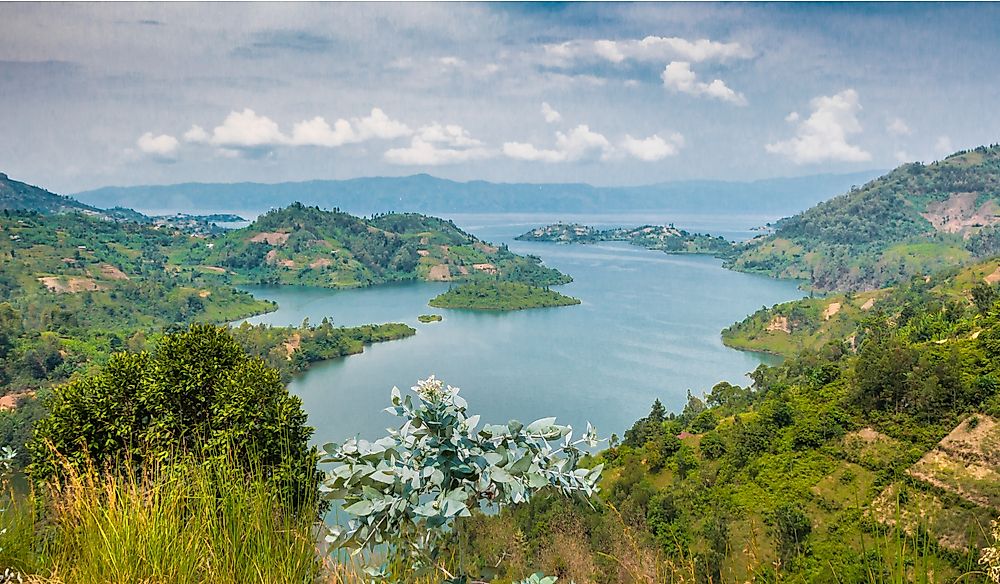What Are The Primary Inflows And Outflows Of Lake Kivu?

Lake Kivu is an African Great Lake located along the border between Rwanda and the Democratic Republic of the Congo (DRC). With an area of 1,040 square miles, it is Africa's eighth largest lake. Approximately 58% of Lake Kivu is located within the boundaries of the DRC, while the remainder falls within Rwanda's borders. The lake has a length of 55 miles and a width of 30 miles at its maximum points. The lake is classified as a freshwater lake and is one of the world's three lakes in which limnic eruptions have occurred. Several islands are located within the lake, the most prominent being Idjwi, which is the world's tenth largest island situated within a lake. Several rivers drain into Lake Kivu, although the Sebeya River and the Koko River are its primary inflows. Lake Kivu has one primary outflow, the Ruzizi River.
Inflows of Lake Kivu
Sebeya River
The Sebeya River is a major inflow of Lake Kivu. The river begins within the mountains of the Rutsiro District, in Western Province, Rwanda. The Sebeya's drainage basin covers an area of roughly 110 square miles, and its waters are used to power a hydroelectric station that provides electricity to the town of Gisenyi, Rwanda. The Sebeya is prone to flooding during the rainy season, which has a significant impact on the local area. The government of Rwanda has introduced several measures to protect the banks of the Sebeya from erosion, such as planting new trees near the bank.
Koko River
The Koko River is the major inflow of Lake Kivu. The river is located in Rutsiro District of Rwanda, in the western part of the country. Several rivers drain into the Koko River, but its main tributary is the Rwishwa River. The Koko River is believed to be one of the primary sources of pollutants that end up in Lake Kivu. During the colonial era, the Koko River marked the border that separated the Gisenyi and Kibuye Prefectures.
Outflows of Lake Kivu
Ruzizi River
The Ruzizi River has a length of 73-miles, starting from Lake Kivu and draining into Lake Tanganyika. The river is considered to be relatively young, as it was formed approximately 10,000 years ago when the Virunga Mountains were created through tectonic rifting. Before the formation of the Virunga Mountains, Lake Kivu emptied into the watershed of the Nile River. However, once blocked by the mountains, the Ruzizi River was formed as a new outlet for the lake. During the 19th century, several famous British explorers, such as John Hanning Speke and Richard Francis Button, traveled the Ruzizi River to determine the direction in which it flowed, initially thinking it flowed towards the White Nile. One section of the Ruzizi separates Rwanda and the DRC, while another section of the river forms part of the border separating the DRC and Burundi. The waters of the Ruzizi are used to produce hydroelectricity at the Ruzizi I and II hydroelectric power plants, which are jointly owned by the governments of the DRC, Burundi, and Rwanda. The Ruzizi River is home to several animals, the most famous being Nile crocodiles and hippopotamuses.
Ecological Significance of Lake Kivu
Lake Kivu is ecologically significant since it is home to approximately 28 species of fish, four of which were introduced to the lake. The lake is also home to several species of freshwater crabs, two of which are endemic to the lake.











